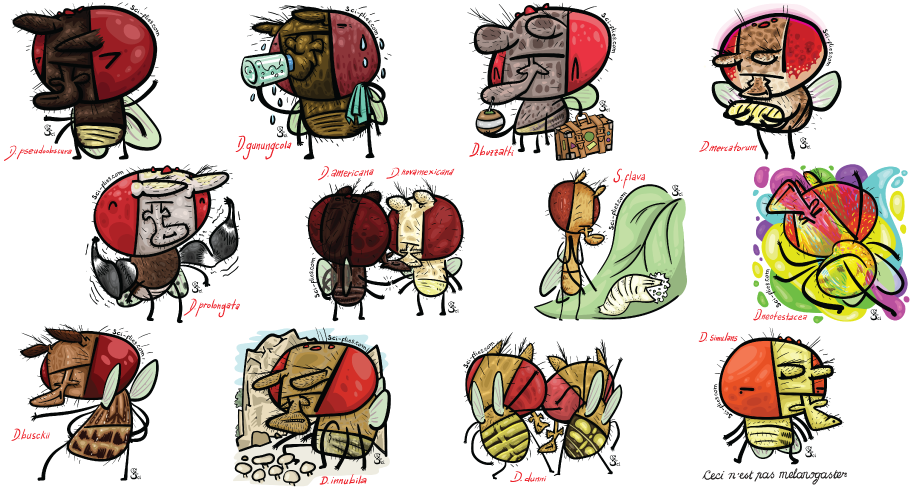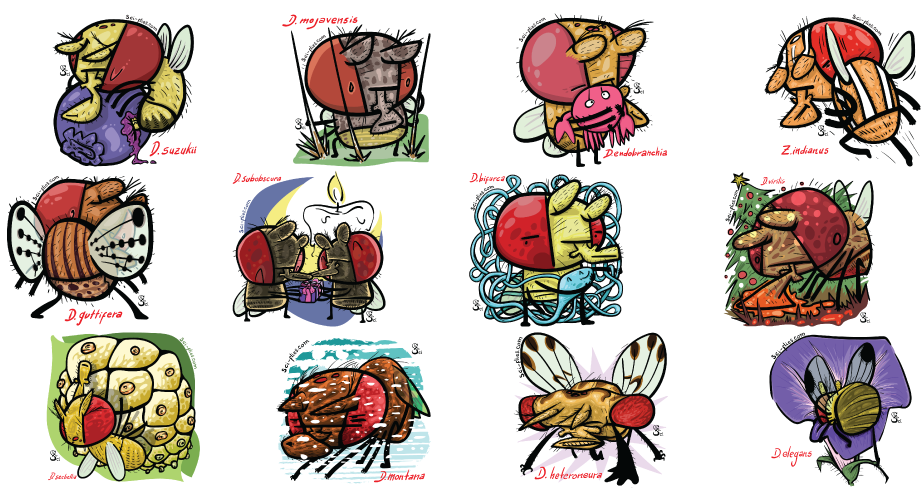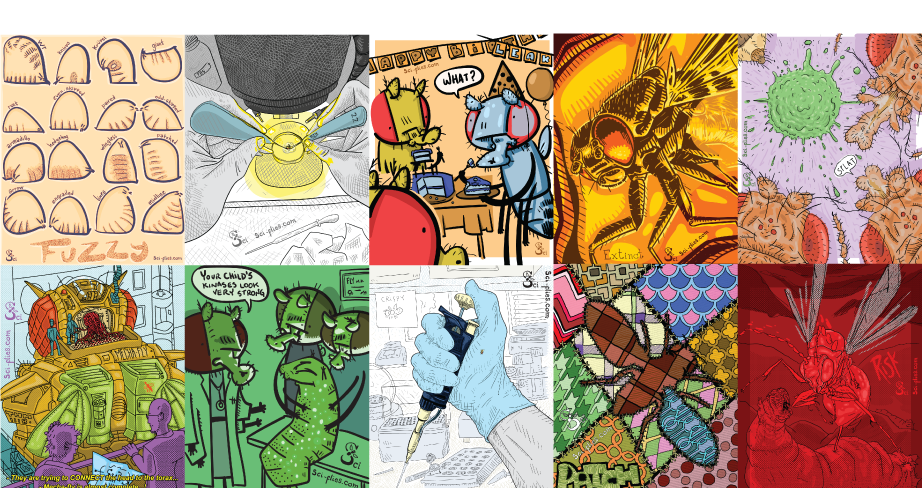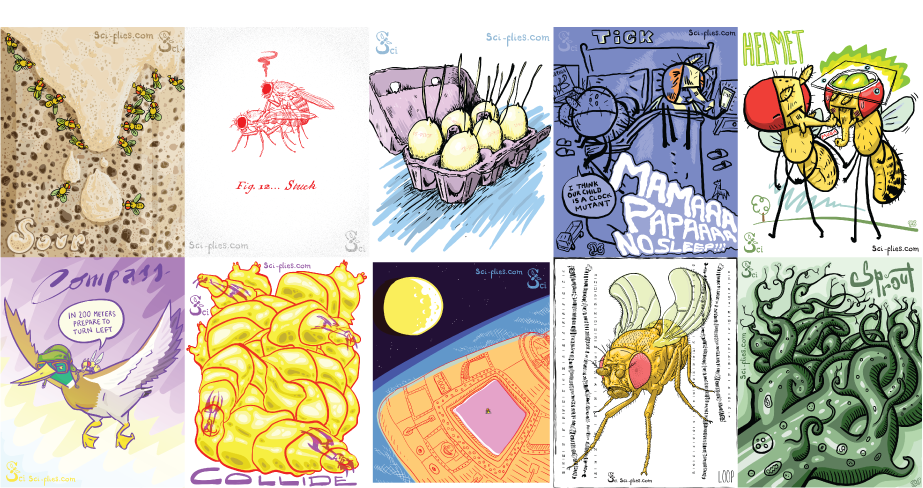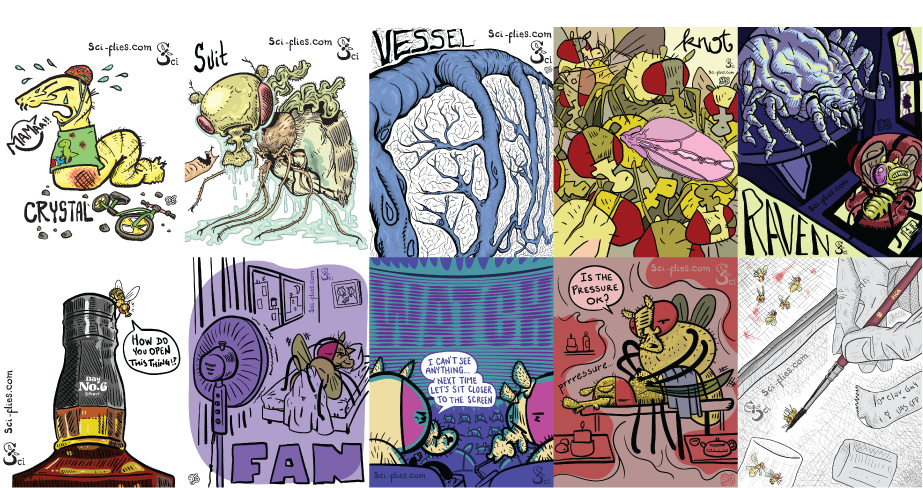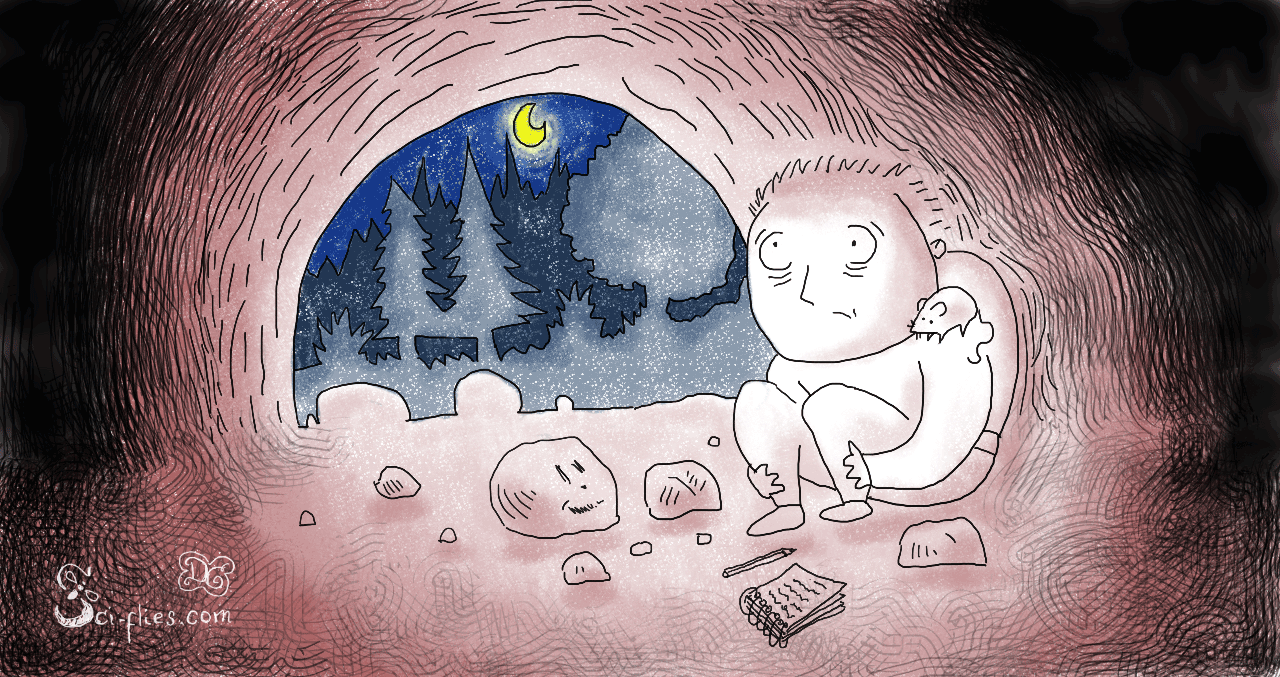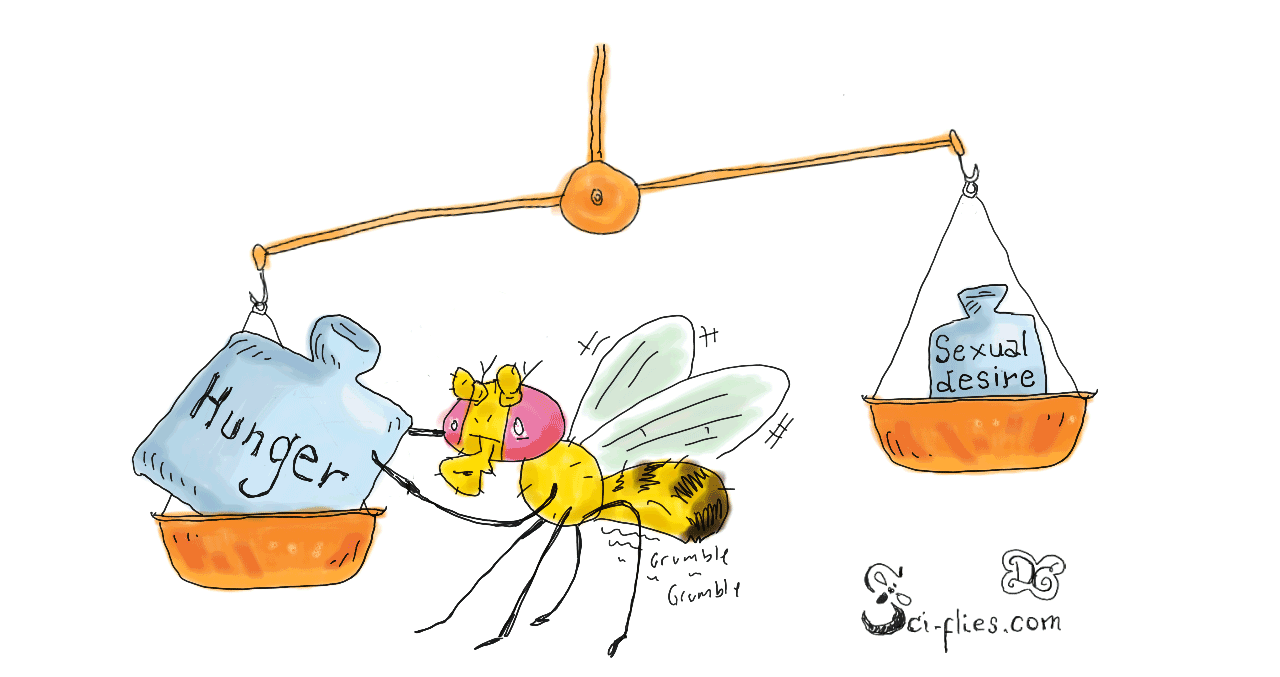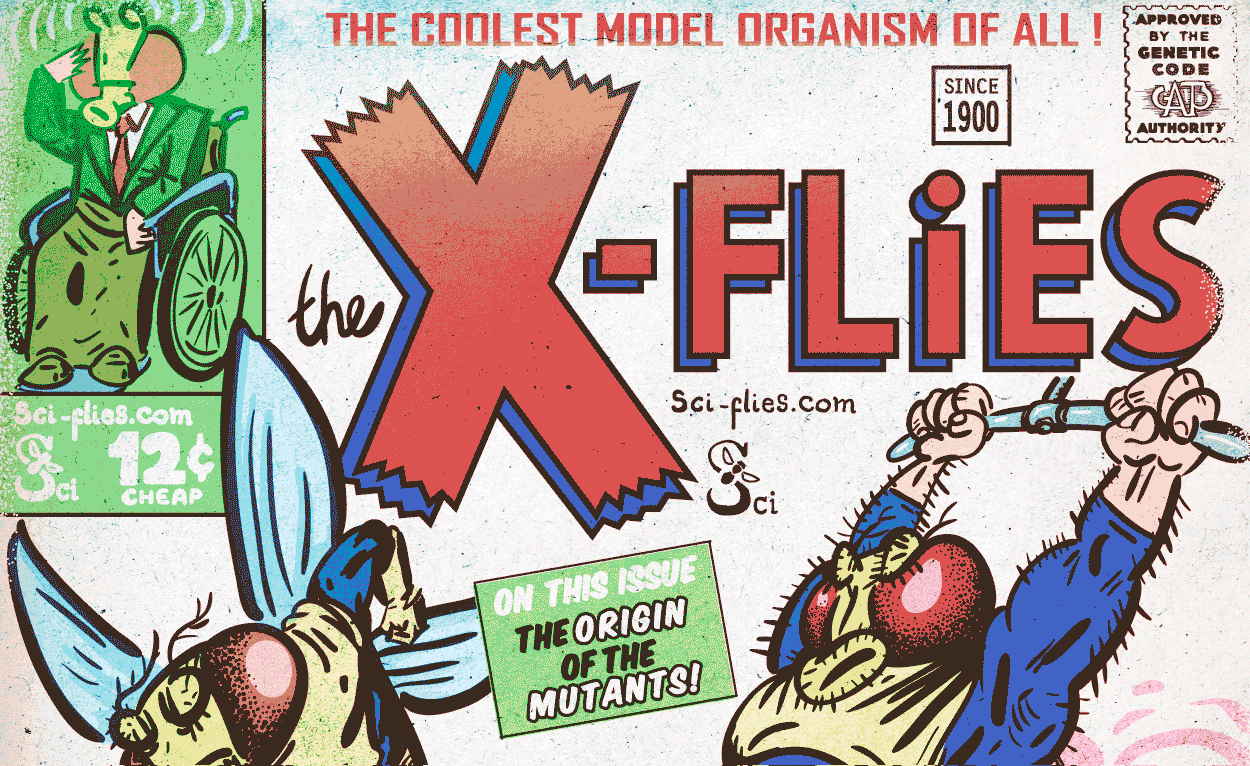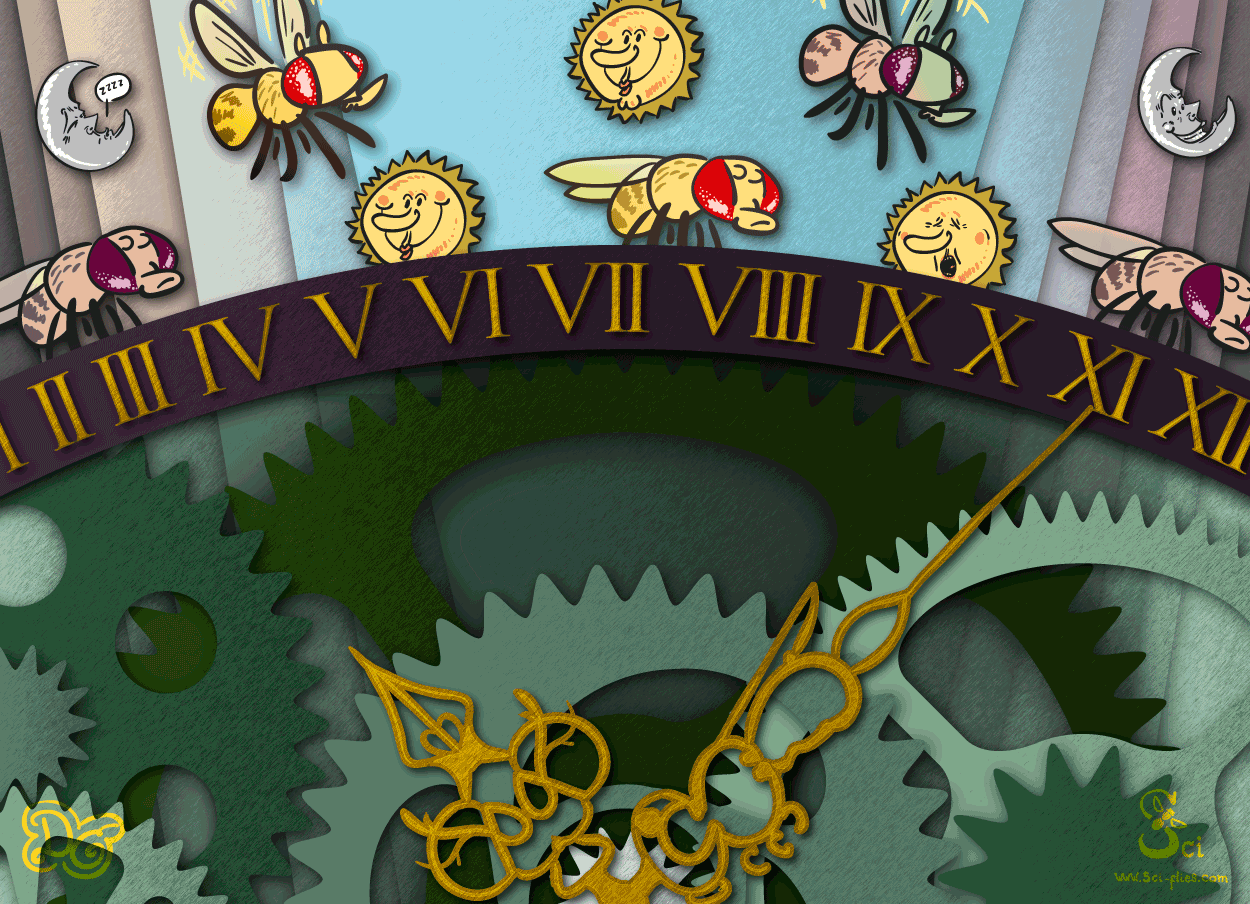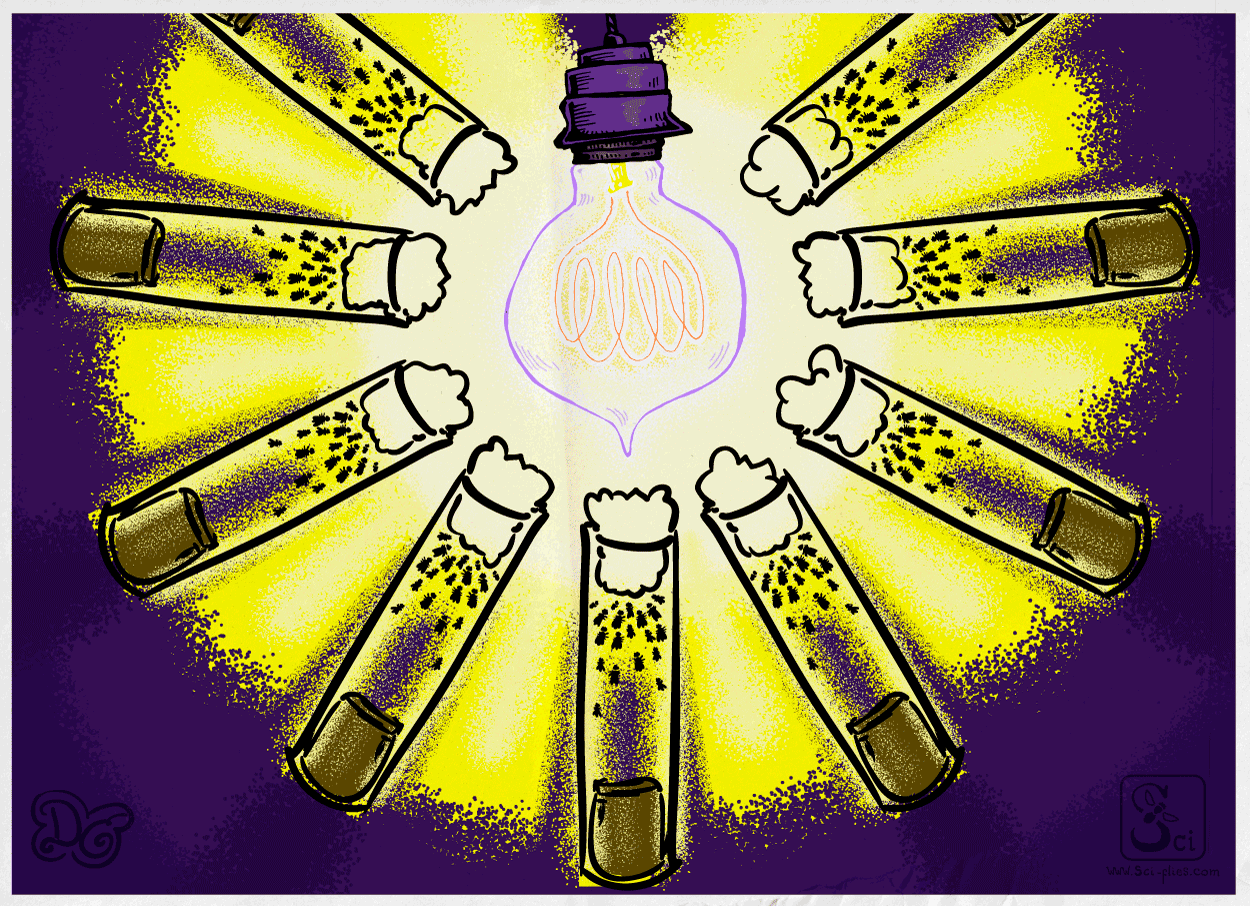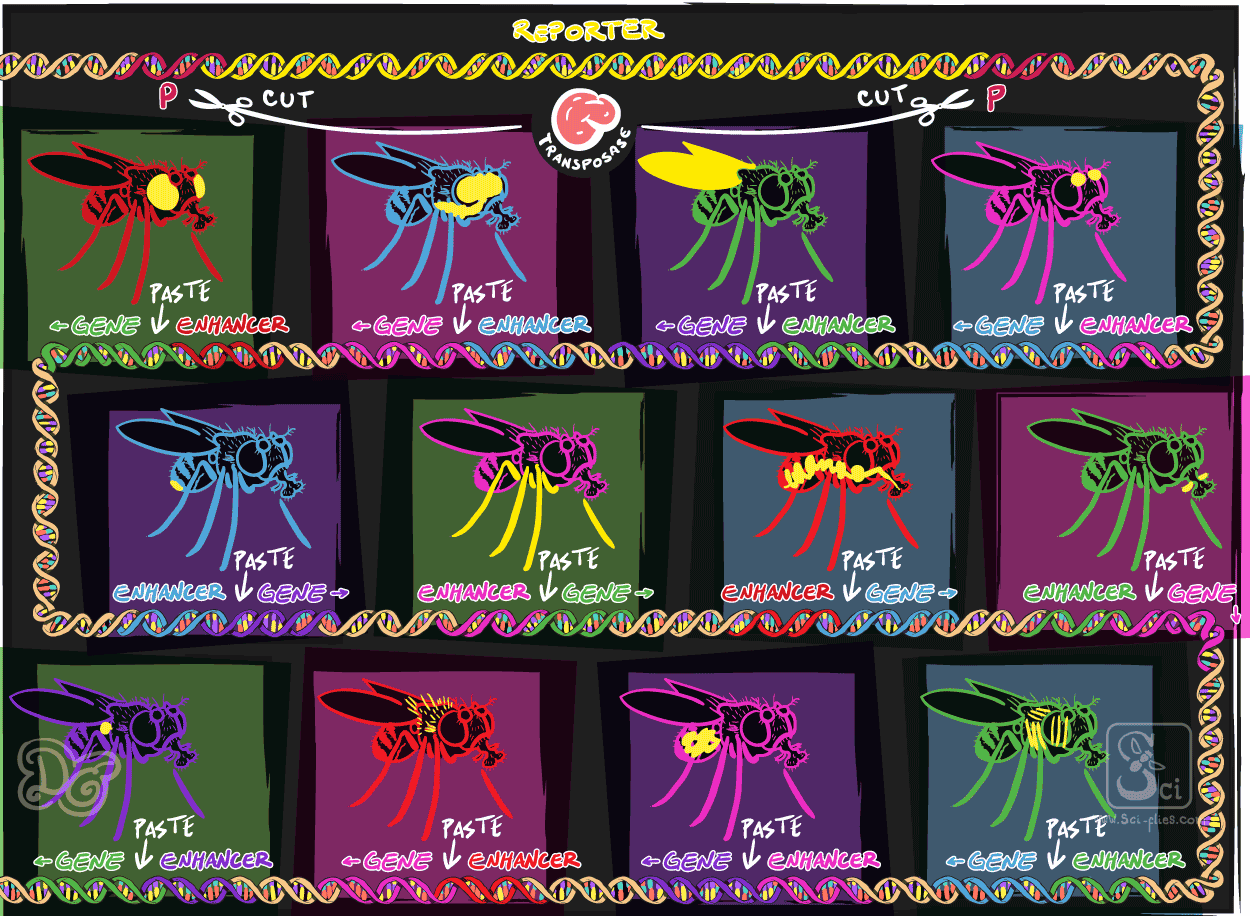Model Organisms... a Love Letter to the Fly
Today I will talk about model organisms. What they are, what they are used for an what are the characteristics of the Drosophila fly as a model organism. I will tell you why the Drosophila fly is a good model and why I like working with them so much. At the end it will be a love letter to the flies.
What is a model organism
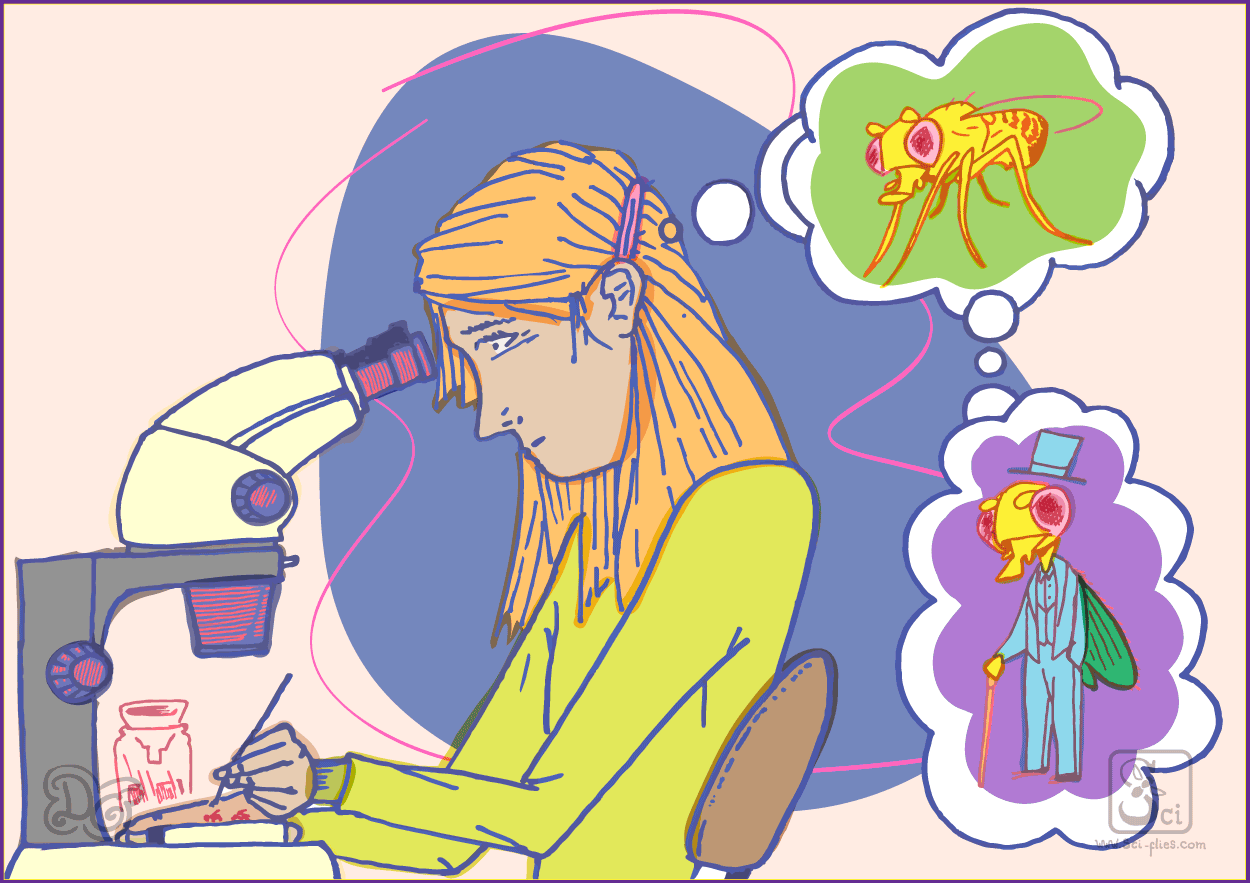
When we want to explain something complex, we generally do it by using examples and metaphors. We take simpler situations that contain the key elements of what we want to explain.
To model in science is similar. It is about producing a simpler version of something more complex.
In biology, many times what we are interested in studying (to give an example, what happens to the brain while we sleep) can be very complex to do in the organism we are interested in (the human) and its study can even be imposible for ethical reasons. That is why we study the same processes (or similar) in simpler and more accessible living beings. We model what we want to understand in model organisms.
But, what is a model organism then?
A model organism is a species, that is a living being (animal, plant or a microorganism), that we study in great depth to make generalizations about biological phenomena.
But, how valid is it to do that? Why asume that what we observe in one species can be applied to others?
All organisms are connected through evolution, like members of a great big family. We share more or less characteristics of how we function according to the degree of relationship. The most basic characteristics are more widespread while the subtleties are shared only with closer relatives.
So, if we want to study how DNA works, we can do it in any living being, since we all have DNA. If we want to study embryonic development, we can only do it in animals. If, on the contrary, we are interested in facial expressions, we will have to study it in monkeys (or horses).
Models, Models everywhere
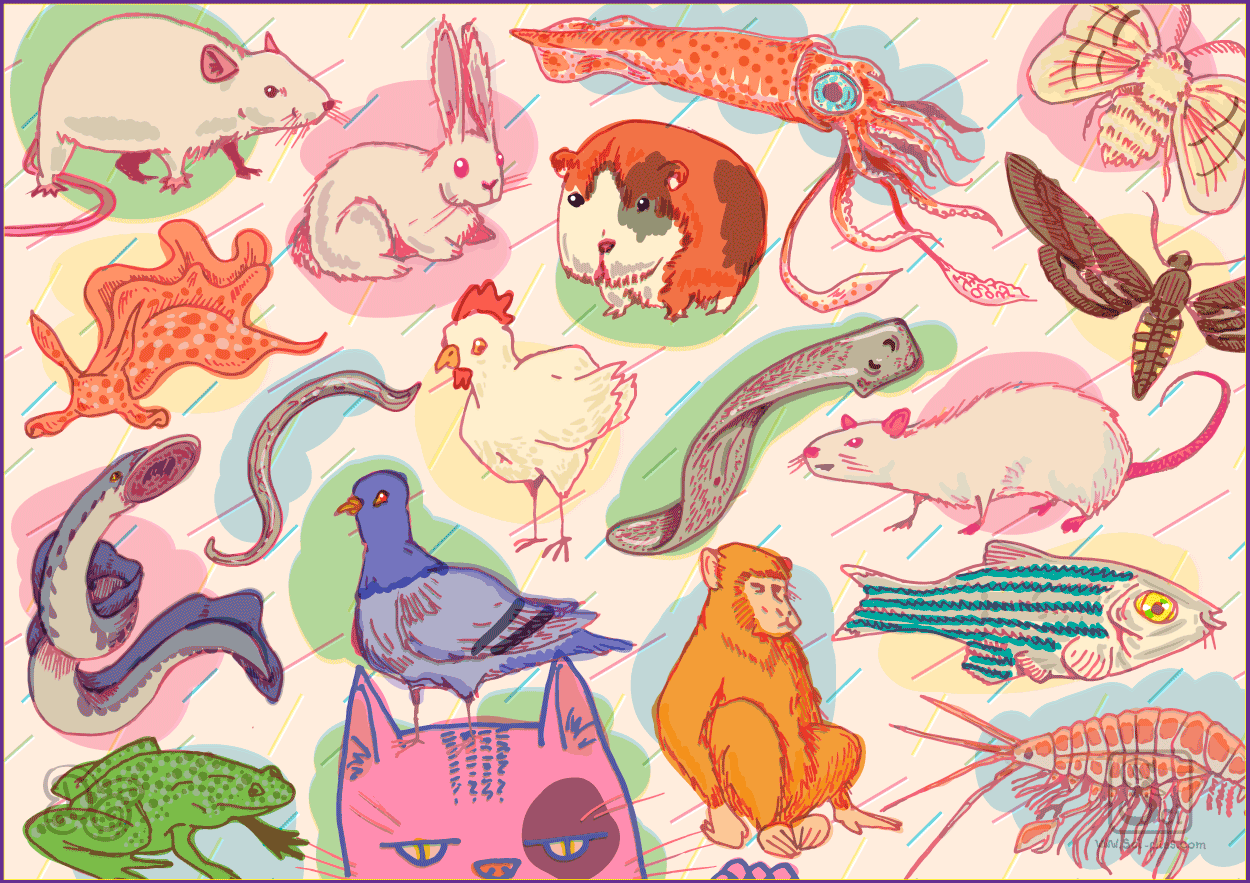
There are model organisms of all types, bacteria, other microorganisms, plants and animals. Since this is a love letter to flies and flies are animals, I will tell you a little about other animal models and what they are studied for.
As I said, the more basic a process is, the more organisms that share it, our options to choose a model are going to be many. But other considerations come into play and that is why there are many model organisms, some very specific.
Maybe everyone heard about the mice; they are a very studied model organism. They are small and relatively easy to breed. They are mammals like us, that is why a great many number of phenomena of interest to humans, mainly related to diseases, are studied on them. Like mice, rats are also used. In the past guinea pigs were also common.
But these are not the only mammals that are studied. Some specific aspects of the functioning of mammals are studied in other models, such as rabbits or cats. More complex behaviors and learning processes can be studied in dogs, horses, dolphins and monkeys.
The process of embryonic development, that is, how a complete organism is obtained from a single cell, is studied with the African frog Xenopus, with chickens and with zebrafish. Because this process is very similar in all vertebrates.
The nematode worms C. elegans are very simple but very powerful organisms as a model of molecular and genetic processes of development. Many human diseases and the bases of phenomena such as aging and obesity are studied on them.
Lastly, moths such as Bombyx mori (the silk moth) or Manduca sexta (tobacco worm) are traditional models of insect biology.
And there are many, many more.
The Drosophila Fly, A Model for Everything
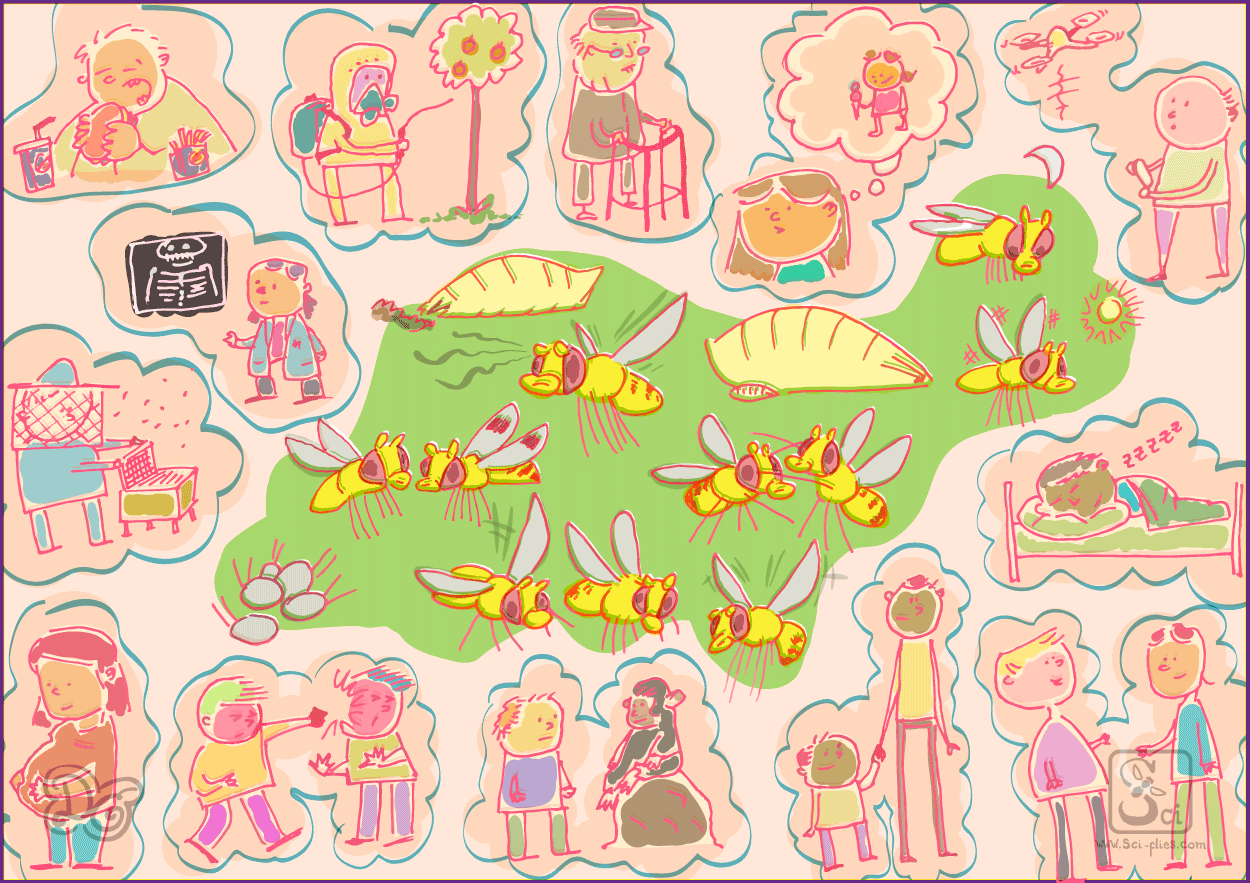
The study of the Drosophila fly started with genetics. Very important discoveries were made on these flies about the bases of inheritance and about mutations (we will see this in future posts) at the beginning of the 20th century.
At present, very diverse aspects of biology are modeled on them (that could be extrapolated to the biology of humans if one is generous).
For example, the molecular, genetic and cellular bases of embryonic development are studied in the fly.
Physiological and metabolic processes of the internal functioning of organisms are also modeled in flies. This allows us to understand how and why we feed, grow and age.
The senses can also be modeled. How sight, smell, taste and touch work, and how these senses relate to more complex aspects of biology such as orientation, learning, decision making and memory.
Also complex aspects of neurosciences, such as courtship, aggression, memory, sleep, biological rhythms, relationships between individuals, preferences, etc can be studied on the fly.
And, the study in Drosophila does not stay only in what happens to the individual. By studying related fly species that live in different environments we can understand how species evolve and how they relate to their environment.
The love letter
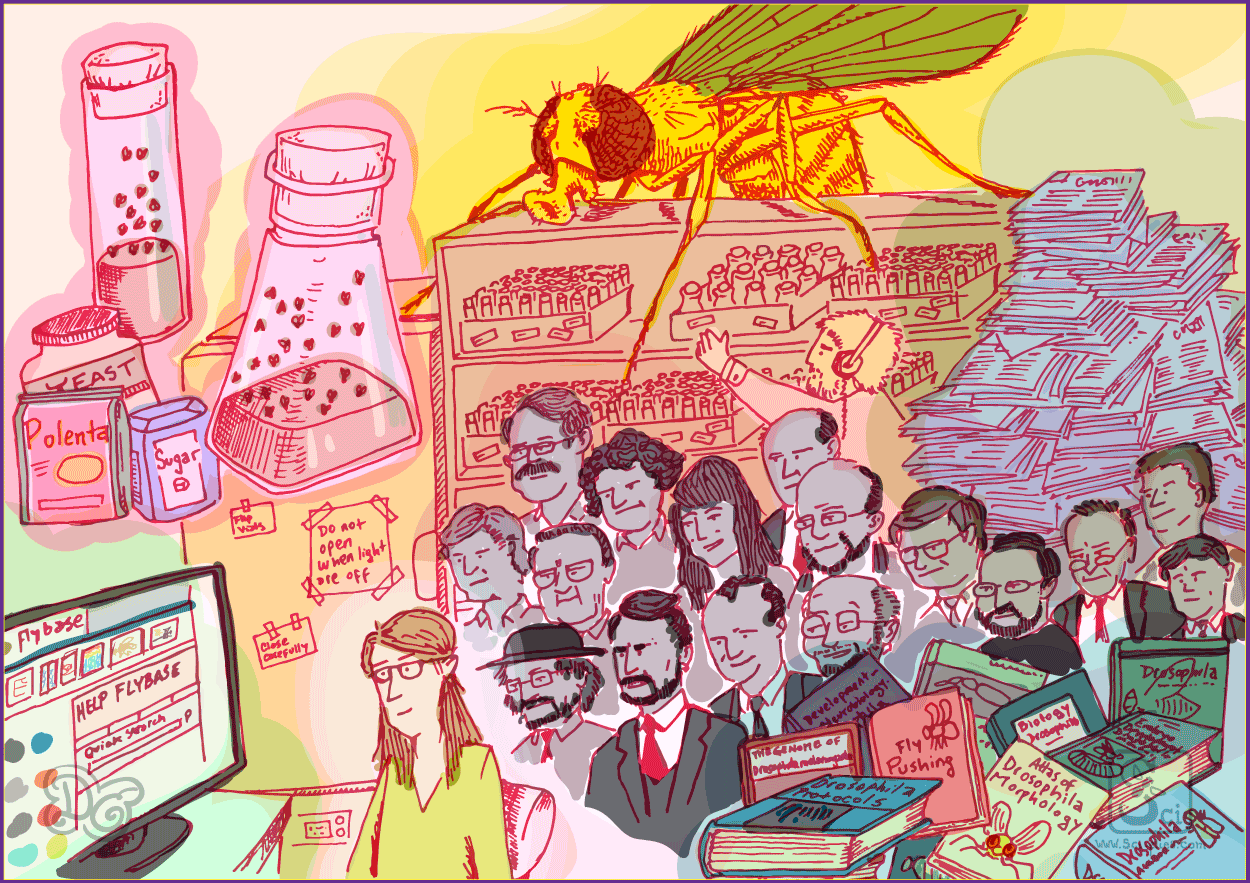
Drosophila is a very powerful and versatile model. There are many reasons why I consider it also a good model.
They are very easy to breed. They are cheap to feed with a mixture of polenta, sugar and brewer’s yeast. We can have many of them in small tubes or bottles. You can have thousands in very little space, it is only necessary to maintain the temperature at 25 C and flip them to new tubes with food every now and then. They reproduce easily and quickly.
Working with Drosophila you are not alone. There is a big community of scientists working with Drosophila flies. They are very generous and it is a general rule to freely share the resources that are generated to study flies. It’s just a matter of sending an email, or talking to someone at a conference and they’re always willing to help and share.
There are large repository centers that keep what we call “lines, stocks or strains” of flies, they are mutant or transgenic variants of the same species, that is, flies that have some genetic alteration (we will see it in more detail in the future). There are thousands of fly lines and one can order them and receive them by mail.
This is very important because in Drosophila there is a great amount of genetic tools, which allow to make very precise studies at the genetic level and draw very detailed conclusions in a relatively easy manner.
One of the best tools is Flybase. A site that has all the information about the genome of the fly, that is, the sequence, the genes, what is known about each gene, the scientific publications related to each one, the fly lines available and much more. Its access is free (but if one can pay, they are happy to receive it, since unfortunately their budget is being cut).
It is a model with a lot of history. There are more than a century of publications available related to the biology of Drosophila. Stacks and stacks of papers. Every day new ones are published and new research lines are opened and new disciplines are added to the model. There are also many books with basic information on the biology of the fly and on specific aspects.
The description of the basis of genetics in Drosophila in the early twentieth century and the subsequent development of powerful and simple tools, changed the way of thinking experiments in many disciplines of biology. Thus, great contributions were made to the bases of biology, among which are the works of four Nobel prizes carried out with flies (1 2 3 3 3 4 4 4).
For all this, and because they are beautiful, I love to work with these little flies.


